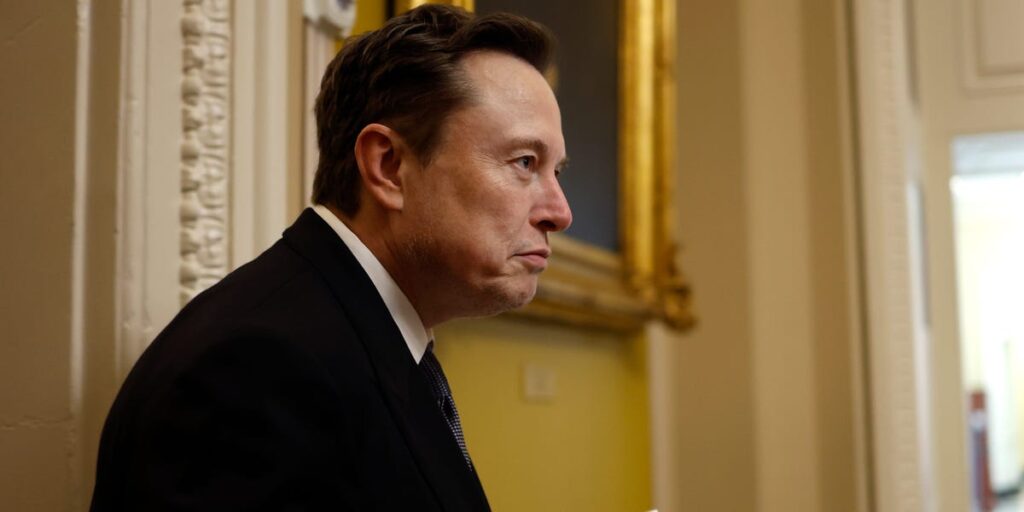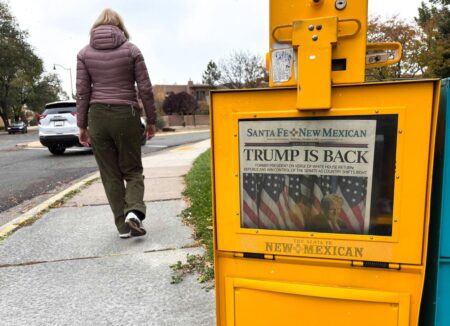- Trump’s order may end remote work for many federal employees.
- Yet, collective bargaining agreements and other factors may affect the return-to-office timeline.
- With only 15% of federal jobs in DC, workers nationwide will be impacted.
If you’re a federal employee who works remotely even part of the time, your daily life could soon change.
President Donald Trump’s return-to-office order means that the roughly half of federal workers who can sometimes log on from outside the office could spend more time commuting.
Yet how quickly that might play out is unclear, despite Trump’s mandate.
Which federal workers will have to go back to the office?
Which federal workers are required back in the office may depend on factors like whether they’re covered by a collective bargaining agreement — a contract between an employer and workers — or whether they’re eligible for an accommodation to maintain a remote setup. In short, the particulars make the situation difficult to parse for many workers.
“It’s a mess,” Kristin Alden, an employment attorney in Washington, DC, who often works with federal employees, told Business Insider.
The order also states that it will comply with applicable law.
Vanessa Matsis-McCready, an employment attorney at Engage PEO, which provides HR services, told BI that the wording over applicable law could be an acknowledgment of possible conflicts with collective bargaining agreements. RTO orders that appear to run counter to those could result in workers filing grievances, she said.
Alden said it’s unlikely that Trump’s order would supersede the collective bargaining agreement for federal workers whose roles are covered by that agreement.
Randy Erwin, president of the National Federation of Federal Employees, a labor union, told BI that a little over half of federal employees are covered by such agreements.
How will the process work?
For RTO mandates to unfold, she said, agency and department heads will most likely issue an order for workers to come back within a certain period. After that, workers who don’t comply will be warned that they’re in violation of the policy. They’d then be given time to respond — at least 30 days — before they’d be fired, she said.
It’s possible that leaders will show some discretion in how and how quickly they enforce the RTO rules, Alden said.
In the meantime, workers are left wondering what their timeline looks like.
The White House and its supporters could make a big push to propel the RTO effort. In a November op-ed in The Wall Street Journal, Elon Musk and Vivek Ramaswamy wrote that making workers return to the office five days a week “would result in a wave of voluntary terminations that we welcome.” That effort is part of the Department of Government Efficiency advisory group aimed at slashing federal spending and regulations.
RTO orders won’t just affect those in the nation’s capital. Only about 15% of all federal jobs are in the Washington, DC, area, according to USAJobs, the government job board.
White House Deputy Press Secretary Anna Kelly said in a statement to BI that Trump signed the order to make the federal government more efficient.
“Study after study shows that employees are more productive, more focused, and more collaborative when working in the office rather than at home,” she wrote.
DOGE didn’t respond to BI’s request for comment.
When will federal workers have to return to office?
Only about half of the 2.28 million civilian federal workers can do their jobs from home. Others, including those providing healthcare to veterans, who staff national parks, or who inspect food supplies, can’t work remotely, the government’s Office of Management and Budget said in an August report.
Federal workers who can do their jobs remotely and who have an office to report to already spend about 61% of their time working there. According to OMB, 10% of federal employees are fully remote.
Because the wording of Trump’s executive order walking back remote work includes the phrase “as soon as practicable,” there appears to be some wiggle room for how long it might take for agencies to implement those orders, Matsis-McCready said.
“It signals that we know that there’s going to be obstacles that will have to be addressed with this directive,” she said.
The mandate requires federal employees in the executive branch, including employees for agencies like the Departments of Defense, Justice, and Labor, to return to the office.
Will there be any accommodations?
Erwin from the National Federation of Federal Employees said that telework is one of the most important concerns for many federal workers outside pay and benefits.
Matsis-McCready said telework, either part time or full-time, can be one allowance granted to a worker who’s disabled. There’s a process, she said, for how workers can seek these types of adjustments.
Trump’s executive order contains the phrase, “agency heads shall make exemptions they deem necessary.” That’s another signal there could be some discretion, she said.
Charles Ezell, acting director of the Office of Personnel Management, wrote in a memo Wednesday that all agency leaders should revise their telework policy by 5 p.m. on Friday to require workers to be at their “duty stations” unless they have a disability, qualifying medical condition, or “other compelling reason certified by the agency head and the employee’s supervisor.”
One group of federal workers who could be in particular peril, Alden, the DC attorney, said, are those who have had an informal OK — though not an official accommodation — from higher-ups to work remotely because of, say, a medical need.
“Those are the people that I’m most concerned about,” she said.
Federal workers should expect some confusion
Donald Kettl, a professor emeritus and former dean of the School of Public Policy at the University of Maryland, told BI that for a share of those workers who spend part of the time working from home, the change could be enormous. That’s especially true, he said, if they joined the government when remote or hybrid setups were commonplace.
Pew Research reports that slightly more than half of the federal government’s civilian workforce has been on the job for less than a decade.
Kettl said younger government officials who might have school-age children, for example, could see their lives disrupted.
“For many people, it’s going to be very, very, very messy,” he said.
Kettl said even things like commutes could get harder as more workers use the roads and rails.
Do you have something to share about your RTO experience? Business Insider would like to hear from you. Email our workplace team from a nonwork device at [email protected] with your story, or to ask for one of our reporter’s Signal numbers.
Read the full article here
















